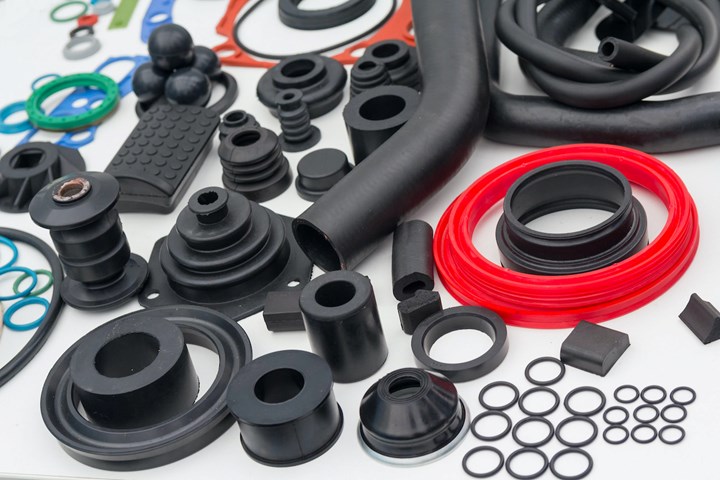Graphene Nanotubes for Fluoroelastomers
OCSiAl and Daikin have developed nanotubes for highly durable, electrically conductive FKM compounds.
, (U.S. office in Columbus, Oh.), the world’s largest manufacturer of single-wall carbon/graphene nanotubes and , a pioneer in fluorine technology, have jointly developed a graphene nanotube technology for highly durable, electrically conductive fluoroelastomer (FKM) compounds with improved heat stability.

Outstanding chemical and high-temperature resistance make FKM compounds a material of choice for sealing elements exposed to harsh environments. The automotive, oil and gas, aerospace, and other industries where conventional elastomers hardly withstand severe operating conditions, are boosting the growth of the FKM market. Specific applications demand further improvement in FKM mechanical performance, such as improved modulus, tear resistance, and tensile strength. Improved electrically conductive properties are required in electric vehicles and various ESD control areas.
Introducing just 0.3% of Tuball graphene nanotubes produced by OCSiAl to fluoroelastomers makes it possible to obtain anti-static FKM compounds with volume electrical resistivity below 10 Ω∙cm. Such a low working dosage allows manufacturers to avoid the negative trade-offs typical for other conductive additives in terms of hardness, extrusion rate, and degradation of mechanical strength and elastic behavior.
To guarantee material stability and durability, the elastomer’s properties under service conditions, particularly at high temperature were studies. Tests at 392 F/200 C show that FKM samples modified with nanotubes demonstrate improvement in tear strength of up to 61%, tensile strength of up to 92%, strain at elongation (M50) of up to 71%, and better elastic properties, while also retaining hardness. Assessment after heat aging also shows significantly improved mechanical property stability and retained elasticity compared to reference material: tear strength almost 80% higher, modulus up to 54% higher, and retained elastic properties were indicated after aging at 446 F/230 C.
Currently, applications of innovative nanotube-reinforced fluoroelastomers are being developed by a number of companies in the automotive and equipment construction sectors, reaching higher performance for seals, O-rings, hoses for hybrid vehicles, rubber jacketing materials, heat-resistant cords and plates, as well as rubber parts used in robotic factories.
Related Content
-
Tracing the History of Polymeric Materials -- Part 30: Polyurethane
In the world of polymers, polyurethane chemistry is probably the most versatile. This a resulted in a wide range of products made from these materials and given the industry the flexibility to respond to the progressive march of regulatory concerns.
-
General Polymers Thermoplastics to Further Expand Distribution Business
NPE2024: Following the company’s recent partnership buyout, new North American geographic territories are in its sight.
-
Tracing the History of Polymeric Materials -- Part 29: Polyurethane
This material family has unparalleled versatility, not only in terms of the forms the material can take, but in the different ways in which it can be processed.




